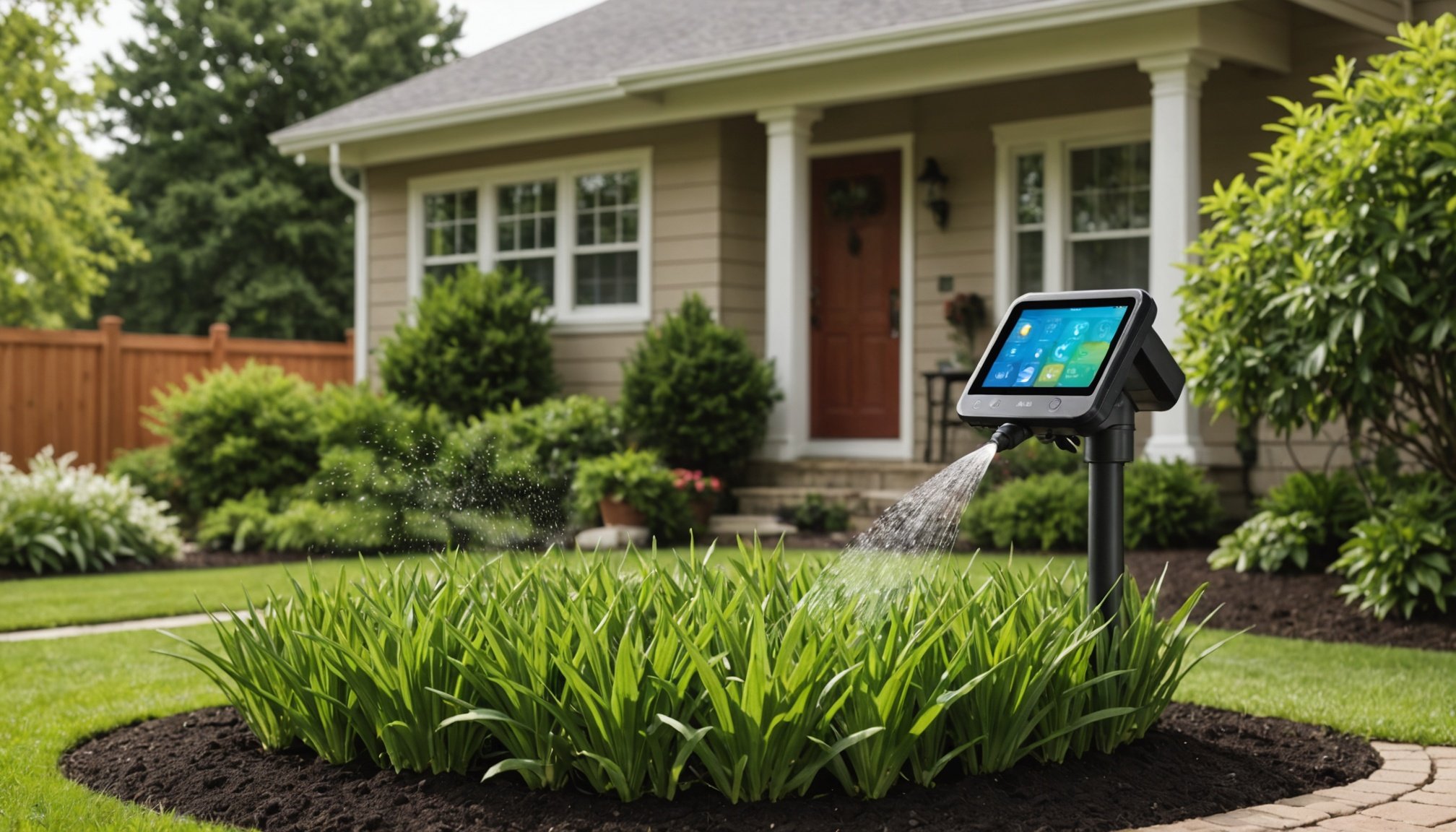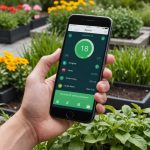Overview of Smart Irrigation Systems
Smart irrigation plays a pivotal role in modern agriculture and home gardening by optimising water use and enhancing plant health. At its core, smart irrigation refers to home watering systems that leverage technology to deliver the right amount of water at the right time, based on environmental factors. This contrasts with traditional methods by being more efficient, sustainable, and adaptable to varied landscapes.
One remarkable aspect of these systems is their integration with smartphone technology. Users can control automated watering schedules, monitor soil moisture levels, and receive weather updates directly on their devices. This integration ensures that gardens and landscapes receive precise watering, promoting conservation and minimizing waste.
Also to discover : Elevate your home security: seamlessly control your smart lock with your smartphone
Automated watering offers numerous benefits for home gardeners and landscapers. By adjusting water levels according to real-time data, plants remain adequately hydrated, reducing maintenance effort and preventing overwatering, which could lead to root rot. Furthermore, these systems contribute to environmental sustainability by conserving water resources, an ever-critical concern in today’s eco-conscious society.
Overall, smart irrigation represents a sophisticated yet user-friendly approach to watering, offering efficient management of gardens and landscapes while fostering a harmonious relationship with the environment through technology. Whether for a small home garden or expansive landscapes, embracing smart irrigation is a sensible and sustainable choice.
Also to discover : Elevate your smartphone to a smart garden control center: a comprehensive step-by-step guide
Benefits of Implementing Smart Irrigation
When it comes to water conservation, smart irrigation systems are game-changers. These systems integrate advanced technology to precisely control water usage, drastically reducing waste. Traditional systems often lead to overwatering, but smart irrigation uses sensors and weather data to determine the exact amount of water needed, ensuring efficient resource use.
This efficiency not only conserves water but also translates into significant cost savings. By reducing unnecessary water usage, users can see a marked decrease in their water bills over time. Implementing smart irrigation may involve an upfront investment, but the savings on water bills can make it a financially wise decision in the long run.
Beyond just financial and resource savings, smart irrigation contributes to the health and growth of plants. By optimizing watering schedules based on plant and soil needs, plants receive just the right amount of hydration, promoting robust growth and resilience. This system guards against overwatering and underwatering, ensuring that each plant thrives in its specific environment.
Ultimately, the shift to smart irrigation not only benefits individual users but also the wider community by fostering sustainable practices and reducing the environmental footprint associated with traditional irrigation methods. Benefits compound as you conserve water, save money, and enhance plant health all in one go.
Choosing the Right Smart Irrigation System
Selecting the right smart irrigation system can be an effective way to conserve water and maintain a healthy landscape.
Types of Smart Irrigation Systems
There are several smart irrigation technologies available. Weather-based irrigation controllers adjust watering schedules based on local climate data, while soil moisture sensors ensure irrigation only occurs when necessary. Systems can vary from simplistic, smartphone-integrated models to advanced setups with multiple inputs ensuring precision irrigation.
Key Features to Consider
When evaluating smart irrigation systems, consider features such as compatibility with existing irrigation setups, ease of installation and operation, and mobile app accessibility. User-friendly interfaces and customized scheduling options can enhance the system’s efficiency. Important features may also include energy efficiency, integration with other smart home devices, and extensive customer support.
Popular Brands and Models
Several brands offer highly regarded smart irrigation systems. Rachio, for example, is praised for its intuitive app and adaptability, while Orbit B-hyve is noted for its robust weather analytics. Rain Bird is another competitive model, renowned for its broad customisation features. Consider the pros and cons of each based on factors like cost, additional functionalities, and long-term reliability before making a decision.
Understanding your unique landscape needs and comparing product recommendations will help in choosing the most practical solution.
Setting Up Your Smart Irrigation System
Setting up your smart irrigation system may seem challenging, but breaking it down into manageable steps makes it straightforward and rewarding. Begin with the installation guide provided by the manufacturer, ensuring you have all necessary tools and components. The guide typically highlights how to position the device for optimal function and connectivity.
Once physical installation is complete, the next step involves smartphone integration. Downloading the specific app associated with your system allows you to manage irrigation settings conveniently. Follow setup instructions to sync your system with the phone, ensuring a strong and stable network connection for seamless operation.
During the installation process, you might encounter common setup challenges such as connectivity issues or app interface glitches. Solutions often include resetting your router, ensuring the app is up to date, or restarting your smartphone device.
Employing these setup instructions and troubleshooting tips not only facilitates the installation but also enhances the effectiveness of the system. By integrating it with your smartphone, you gain control over your irrigation schedule, customize watering zones, and ensure efficient water usage. This empowers you to conserve water resources while maintaining a lush, vibrant garden.
Troubleshooting Smart Irrigation Systems
When smart irrigation systems encounter glitches, understanding common issues is crucial for efficient troubleshooting. Often, problems arise from connectivity errors, sensor failures, or software bugs. To start, ensure that all devices are connected to a stable internet source, as poor connectivity can cause erratic system behaviour.
When dealing with sensor issues, check if the sensors are correctly positioned and free from debris, which may hinder their performance. Dust or dirt can obstruct readings, resulting in inaccurate water allocation. Regular maintenance, such as cleaning sensors and replacing batteries, can prevent these sensor mishaps.
Software glitches often require a system reboot. Before doing so, verify that the latest updates are installed, as manufacturers periodically release patches to rectify known bugs. If issues persist, consult the manufacturer’s support site for additional troubleshooting tips, as they may offer tailored solutions for your device model.
To maintain optimal performance and extend the lifespan of a smart irrigation system, regular maintenance is imperative. This includes inspecting wiring connections, lubricating mechanical parts, and assessing the water discharge uniformity. By adhering to these best practices, users can minimize downtime and ensure their system operates smoothly across seasons.
Integrating Smart Irrigation with Home Automation
Smart irrigation seamlessly fits into home automation ecosystems, enhancing convenience and efficiency. By integrating irrigation systems with IoT devices, homeowners can optimise water usage, leading to conservation and cost savings. This integration allows the irrigation system to communicate with other smart home systems, including weather stations and soil moisture sensors.
The benefits of connecting irrigation systems with an array of IoT devices are significant. For example, if a smart thermostat detects a drop in temperature, it can signal the irrigation system to pause watering to prevent freezing. Similarly, real-time weather updates can adjust watering schedules automatically, maximising efficiency.
Successful home automation setups illustrate the potential of integrating smart devices. For instance, networked irrigation systems can be programmed to work in conjunction with smart lighting, ensuring optimal plant health by analysing plant needs through light and water data. This integration can also be managed via a central smart home hub.
Some advanced setups even include voice control, allowing users to operate their irrigation systems hands-free through smart assistants. These systems collectively form a cohesive smart home environment that responds dynamically to environmental changes and user commands, enhancing the overall home automation experience.
Tutorials and Visual Aids for Smart Irrigation
Navigating the world of smart irrigation can be a daunting task, but thankfully, tutorials and visual aids can make the learning process more approachable.
Video Guides for Installation and Setup
Instructional videos offer step-by-step guidance, making installation and setup more manageable. They provide visual walkthroughs that demystify the process, offering assurance through clear and concise demonstrations. These videos highlight common pitfalls and offer solutions based on real-world scenarios, reducing the intimidation of setting up new technology. Many companies also produce asset-backed videos tailored to specific models and brands, enhancing the accessibility of installing these complex systems.
Diagrams for System Layouts
Clear and informative diagrams are crucial for understanding smart irrigation system layouts. They present a visual representation of how various components interconnect, aiding in the comprehensive understanding required for optimal performance. These diagrams depict the system’s structure, piping, and zones, ensuring users can install and maintain their systems effectively. Proper layout comprehension can mitigate potential errors before they arise, equipping users with the knowledge needed for successful smart irrigation deployment.
Infographics on Water Conservation Benefits
Infographics powerfully communicate the benefits of smart irrigation concerning water conservation. By visually summarising complex data, they highlight crucial statistics and illustrate how these systems can conserve water, save costs, and positively impact the environment. Engaging and data-rich, these infographics reinforce the practical advantages of adopting smart irrigation, encouraging informed decision-making.










